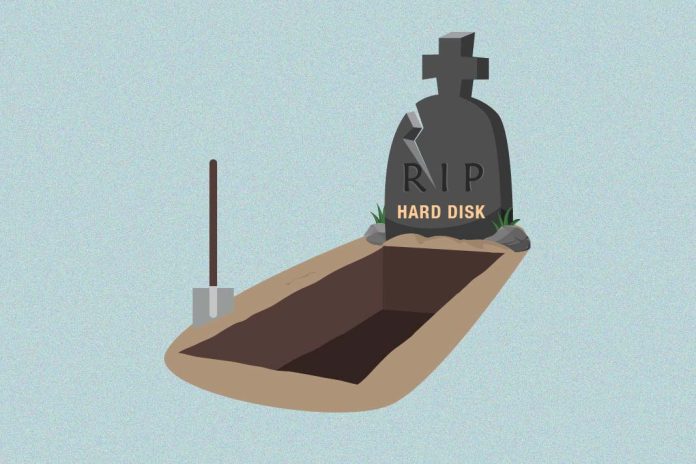When John ‘Coz’ Colgrove cofounded Pure Storage in 2009, the idea of an all-flash data centre was a radical vision. What was once the ambitious goal of a few innovators has now become an industry-wide tipping point, driven by a convergence of factors—from the economics of NAND technology to the urgent need for sustainable computing.
Flash has become the obvious choice for any performance- or latency-sensitive workload. Since flash memory was introduced to enterprise storage, it’s been taking on and replacing hard disk tiers one by one. Today, market conditions mean the move to an all-flash data centre has now changed from an aspiration to a practical strategy.
There are many reasons why the time for all-flash is today, from dealing with data growth and the crossover between the cost of flash and disk to the clear sustainability savings. These are some of the reasons why flash is positioned to replace disks for good:
The Data Deluge
Unstructured data is expected to grow by 10x before 2030, continuing its exponential growth. Organisations must consider how they make use of it all, and flash changes the dynamic for big data analytics, data lakes, content repositories, and even backup and recovery.
The New Economics of NAND
The price-per-bit for NAND flash is declining much faster than nearline hard drives. While today the cost-per-bit of a hard drive is still lower than the densest flash, several key trends are accelerating the shift. First, major flash manufacturers are demonstrating significant density increases, with over 200 layers of stacked 3D NAND in some cases. This translates into better cost efficiency and further improvements in data centre power and space savings. Second, if analyst predictions hold, NAND prices overall are expected to continue their downward trend.
The Sustainability Imperative
Data centre infrastructure represents over 1% of global energy consumption, and this share is growing. Organisations are examining their carbon emissions much more closely and are looking for ways to reduce their carbon footprint. Flash has a vital contribution to make in this reduction.
Power usage may not have previously been a key driver behind migrating datasets, but with the rising unpredictability of energy costs and an increased focus on reducing emissions, this becomes an important consideration. As a result, energy consumption by information technology has become not just an environmental concern but also a significant economic one. Energy efficiency is a leading factor in enabling flash technology to achieve a lower total cost of ownership (TCO) than disk.
The Undeniable Performance Gap
For some organisations, cost will trump performance in decision-making. However, the performance advantage of flash over disk can also translate directly into cost benefits in several key ways.
- Eliminating Stranded Capacity: Because disk performance is low, organisations often end up with stranded capacity. While a spinning drive may hold 20 TB, if the system’s performance maxes out at 16 TB of usable data, they are not deriving an effective cost-per-bit. Flash does not have this issue, as performance stays predictable even as usage increases.
- Improved Resiliency: Any storage environment needs a redundancy strategy to ensure data is not at risk. With flash devices, faster rebuild times mean fewer bits need to be dedicated to resiliency, which equates to better cost efficiency.
- Faster Recovery: For backup and recovery following a ransomware incident, the disk can take an extremely long amount of time to restore data. With flash-based systems, faster restore performance means getting your business back online sooner.
- Greater Reliability: Flash is more reliable than mechanical disk drives. Devices fail less often, leading to fewer replacements, lower costs, less time on maintenance, lower risk, and no skyrocketing maintenance costs in years four, five, and beyond.
The Path to an All-Flash Data Centre
Many organisations are already on the journey to all-flash, having deployed it for performance-sensitive workloads like databases, private clouds, and modern analytics. Those that have deployed modern all-flash platforms are reaping the benefits of performance, server efficiency, simplified operations, and energy efficiency.
Here are some key considerations for organisations planning a migration to an all-flash data centre. A robust strategy should support business goals and include:
- Analysis of business needs and how all-flash will support them.
- A clear view of the total cost of ownership and expected return on investment.
- An understanding of the wider business landscape, including regulations, data protection, and data location.
- Scoping and testing of the solution.
- A plan for data migration, including the end-of-life for existing legacy equipment.
Additionally, the ability to consume all-flash for petabyte-scale unstructured workloads through a subscription model like Storage-as-a-Service (STaaS) allows users to grow as business needs demand. A flexible, cloud-like model should include stringent Service Level Agreements (SLAs). These models bring even more operational efficiency, further widening the gap to legacy platforms. Migrations can be complex, but with the right vendor and partner support, they can be painless. A proof of concept will allow organisations to see the technology in action and validate the benefits.
A Vision Realised
The simple truth is that no one today buys spinning drives because they’re better, but only because they’re cheaper. In almost every way, flash memory is superior to spinning disks, and those advantages are increasing. Flash has become a viable option for everyday workloads, offering enterprises a better way to manage data growth efficiently, reliably, and sustainably.
The economic crossover point for disk and flash is fast approaching. This, combined with the power, space, and cooling savings, higher performance, and better reliability of flash, will soon result in hard drives becoming the less cost-effective option. The dream of an all-flash data centre is now a reality for forward-looking, modern organisations.

